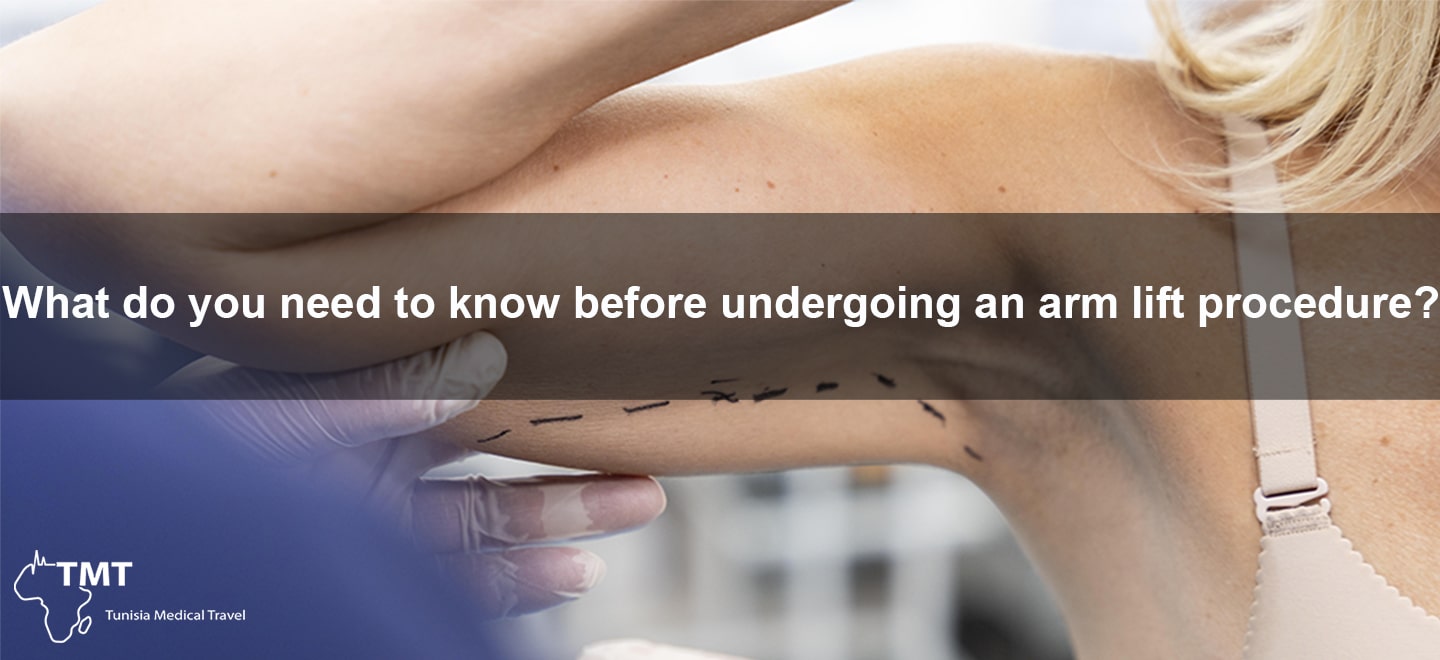What do you need to know before undergoing an arm lift procedure?
What do you need to know before undergoing an arm lift procedure?
General information about the arm lift
An arm lift, or brachioplasty, is a surgical procedure that is performed to reshape the upper arm by removing excess skin and fat. The procedure is usually done on people who have lost a significant amount of weight, or on those whose skin has lost elasticity due to aging. The procedure can be performed on both men and women.
The incision for an arm lift is typically made along the inner aspect of the upper arm, extending from the armpit to just above the elbow. The extent of the incision will depend on the amount of skin that needs to be removed. The incision can be short and limited to the armpit or longer, extending down the arm. In some cases it can be done in the back of the arm.
The procedure is performed under general anesthesia and typically takes several hours to complete. Recovery time varies depending on the individual, but patients can expect to experience swelling, bruising, and soreness for several weeks.
The results of an arm lift are usually long-lasting, but weight gain, aging, and loss of skin elasticity can all affect the appearance of the arms over time.
It’s important to consult a board-certified plastic surgeon who has experience performing arm lift procedures to discuss the risks, benefits, and potential outcomes of the surgery.
Expected Results after an arm lift
It’s also important to understand that the results of an arm lift are usually long-lasting, but weight gain, aging, and loss of skin elasticity can all affect the appearance of the arms over time.
It’s important to maintain a stable weight and to follow a healthy diet and exercise routine after the procedure to maintain the results. Sun protection is also important as sun exposure can cause hyperpigmentation or darkening of the scar.
It’s important to keep in mind that it’s crucial to choose a board-certified plastic surgeon with experience in performing arm lift procedures, and have realistic expectations and understand the risks and benefits of the procedure before making the decision.
Are scars from an arm lift visible?
Scars from an arm lift are typically visible, as the procedure involves making an incision along the inner aspect of the upper arm. The incision can be short and limited to the armpit or longer, extending down the arm. In some cases, it can be done in the back of the arm. The length of the scar will depend on the extent of the procedure and the amount of skin that needs to be removed.
It’s important to understand that while the goal is to minimize scarring, it’s not always possible to make the scars completely invisible. The scar will be red and raised immediately after the surgery, but over time, the scar will gradually fade and become less noticeable.
The plastic surgeon will take steps to minimize the visibility of the scars such as using the appropriate surgical techniques, sutures and surgical tapes. After the surgery, the patient will be advised to follow the scar management techniques such as using scar creams, avoiding sun exposure, and massaging the scar.
It’s also important to keep in mind that everyone’s skin heals differently, and factors such as age, genetics, and overall health can all affect the appearance of scars.
Overall, while the arm lift procedure will leave visible scars, the goal of the procedure is to improve the appearance of the upper arms and the scars will be placed in a way to be as inconspicuous as possible. It’s important to discuss the scarring process with the surgeon prior to the surgery so that the patient has realistic expectations.
Possible complications with arm lift
Like any surgical procedure, an arm lift carries a certain degree of risk. Complications can occur but they are rare. However, it’s important to be aware of the potential complications and to discuss them with a board-certified plastic surgeon before the procedure.
- Some of the possible complications of an arm lift include:
- Hematoma or blood accumulation under the skin
- Infection
- Numbness or tingling in the arm
- Unfavorable scarring
- Skin necrosis or death of skin tissue
- Seroma, a collection of clear fluid under the skin
- Asymmetry
- Persistent pain
- Poor healing
- Reactions to anesthesia
- Changes in skin sensation
It’s important to note that patients who have a history of blood clots, poor healing, or other medical conditions may be at a higher risk of complications.
Overall, while the arm lift procedure carries some risks, serious complications are rare. However, it’s important to follow the post-operative instructions to minimize the risk of complications, and to seek medical attention if you notice any unusual symptoms or changes in your condition.
It’s important to choose a board-certified plastic surgeon with experience in performing arm lift procedures, to discuss the risks and benefits of the procedure and have realistic expectations.

